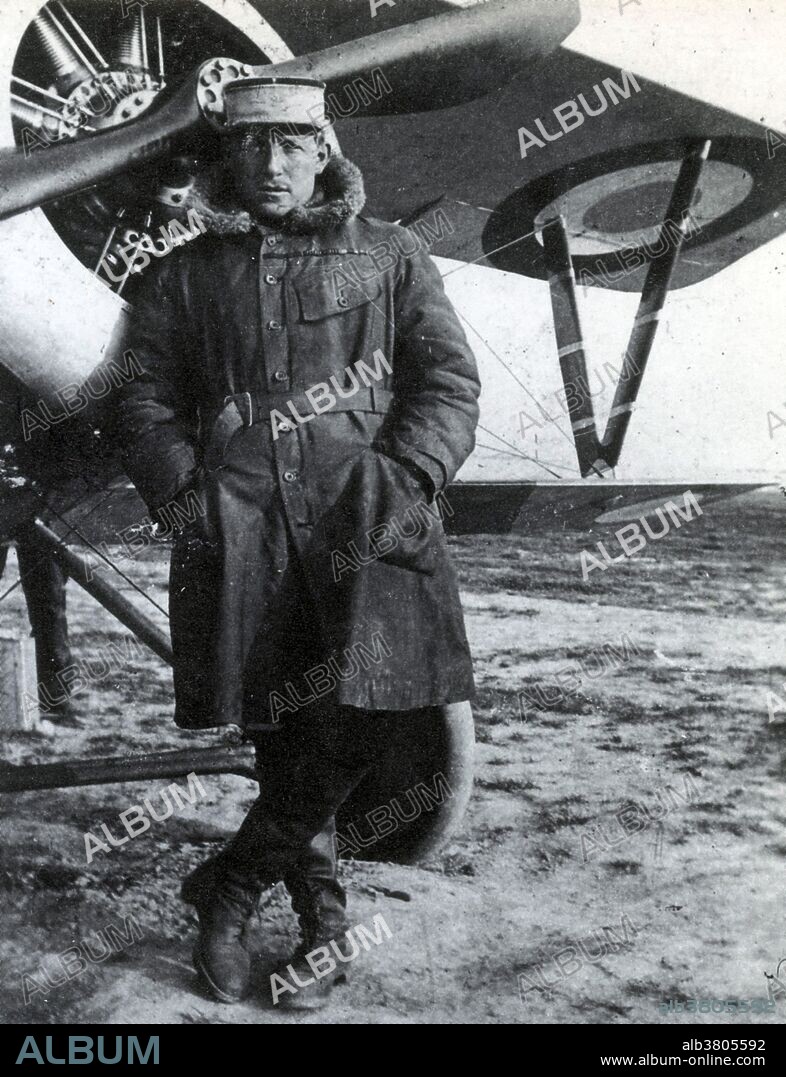alb3805592
Charles Nungesser, WWI French Flying Ace

|
Zu einem anderen Lightbox hinzufügen |
|
Zu einem anderen Lightbox hinzufügen |



Haben Sie bereits ein Konto? Anmelden
Sie haben kein Konto? Registrieren
Dieses Bild kaufen.
Nutzung auswählen:

Titel:
Charles Nungesser, WWI French Flying Ace
Untertitel:
Siehe automatische Übersetzung
Charles Eugène Jules Marie Nungesser (March 15, 1892 - May 8, 1927) was a First World War French flying ace rating third highest in the country for air combat victories. He travelled to South America where he worked as an auto mechanic before becoming a professional racer. His interest in racing soon led him to flying airplanes. When WWI broke out, he returned to France. As a military pilot, he was transferred to Escadrille VB106 in July 1915 and shot down his first plane. By the time Nungesser left VB106, he had flown 53 bombing missions. He was later attached to the famous Lafayette Escadrille, composed of American volunteers. By the end of 1916, he had claimed 21 air kills. He was often so hobbled by wounds and injuries that he had to be helped into his cockpit. By May 1918, he had 35 victories. He finished the war with 43 official victories, the third highest number among French fliers behind René Fonck and Georges Guynemer. He received dozens of military decorations from France, Belgium, Montenegro, United States of America, Portugal, Russia, and Serbia. Nungesser mysteriously disappeared on an attempt to make the first non-stop transatlantic flight from Paris to New York, flying with wartime comrade François Coli. Their aircraft took off from Paris on May 8, 1927, was sighted over Ireland, and then was never seen again. The disappearance of Nungesser is considered one of the great mysteries in the history of aviation. He was 35 at the time of his death/disappearance.
Bildnachweis:
Album / Science Source / New York Public Library
Freigaben (Releases):
Model: Nein - Eigentum: Nein
Rechtefragen?
Rechtefragen?
Bildgröße:
3000 x 3906 px | 33.5 MB
Druckgröße:
25.4 x 33.1 cm | 10.0 x 13.0 in (300 dpi)
Schlüsselwörter:
1. WELTKRIEG • ABWESENHEIT • AERONAUT • BERÜHMT • BERÜHMTE PERSÖNLICHKEIT • EREIGNIS • ERSTER WELTKRIEG • FEUER, KRIEG • FIRST WORLD WAR • FLIEGEND • KRIEG • KRIEG, ERSTER WELTKRIEG • KRIEG, WELTKRIEG I • LUFTFAHRT • LUFTVERKEHR • MANN • NOTABEL • PERSON • PERSöNLICHKEITEN • PERSÖNLICHKEITEN • PROMINENZ • VERSCHOLLEN SEIN • WELTKRIEG I • WORLD WAR 1 • WORLD WAR I • WORLD WAR ONE • WWI
 Pinterest
Pinterest Twitter
Twitter Facebook
Facebook Link kopieren
Link kopieren Email
Email
